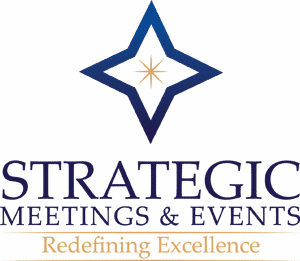Polished Executive Presentations – Talking Heads To Rock Stars
By Kinley Levack
Turning Top Execs into Polished Presenters (Rock Stars)
When Indra Nooyi became CEO of PepsiCo Inc. on October 1, it wasn’t just her experience that made the news, or the fact that she’d played a major role in successfully restructuring the company while serving as CFO, or that she is a polished executive and the second-highest-ranking female CEO in the Fortune 500.
 One of the attributes generating the most buzz is Nooyi’s talent as a speaker. Nooyi honed her skills while fronting an all-woman band during college, and the experience served her well; she is now lauded by insiders and observers for her polished executive presentations and as an effective and powerful communicator.
One of the attributes generating the most buzz is Nooyi’s talent as a speaker. Nooyi honed her skills while fronting an all-woman band during college, and the experience served her well; she is now lauded by insiders and observers for her polished executive presentations and as an effective and powerful communicator.
Unfortunately for meeting planners, Nooyi is the exception to the rule. In most cases, executives as speakers are a necessary evil. “Oftentimes you have your CFO onstage because he’s brilliant with numbers, but his ability to explain that information in a meaningful way is not as perfect,” says Christy Lamagna, chief strategist with Strategic Meetings and Events in Bernardsville, NJ.
With forethought and a few tools and tricks, however, planners can help turn an unpolished talking head into a memorable and skillful presenter, whether that person is within the firm or outside of the firm.
Where It All Begins – Polished Executive Presentations
“I always interview the speakers on the phone first, because you can get a feel for the person’s presentation skills by speaking with them over the phone,” says Tamara L. Christensen, director of online learning for the American Society of Association Executives and the Center for Association Leadership in Washington D.C., where she specializes in training for virtual settings. “C-level individuals are quick thinkers, so be concise and precise in what you want from them as presenters. Also, find out if they have ever done such an event. If they are new to speaking, what are their expectations? Then play off of that information to develop the program.”
For outside executives speaking to a group, “It helps to let them know in advance who will be there. Give specific examples: the VP of such-and-such company, etc.” recommends Carol DeVico, manager of contract administration for Pictometry International Corp. in Rochester, NY. “If you have workshop sign-ups, give the roster to the speaker, so they can see who will be there and can tailor it accordingly. Some will tailor it by working in a few attendee or company names and some won’t, but it’s helpful and really shows that they have done their homework.” Of course, it’s the planner doing much of the work, but as DeVico says, “Give the presenters all the ammunition you can. If they use it, fantastic. If they don’t, you’ve done the best you can.”
When working with outside executives, DeVico also uses a speaker contract that has a secondary purpose. The contract asks for general background information such as their experience, title, and bio, but also asks that the speaker present an abstract of the presentation and that the presentation be pre-approved. “We don’t say that we’re doing it because we want to check out what they’re talking about; we say that we want to enhance what they are talking about. Maybe we can work their topic into something else we’re doing during the conference,” she says. “It’s sort of a trick.”
“If the client gives us an outline, we’ll work with it,” says Lamagna of helping executives create a presentation. “If [the group] has the budget, we’ll even send a scriptwriter in,” she says. “Or if we know we have a group that’s notoriously bad about meeting deadlines, we’ll send in a speechwriter.” In fact, one of Lamagna’s best tricks is to “send in the speechwriter, saying, ‘Okay, here’s what I think you want to get across.’ All of a sudden the executive is saying, ‘No, that’s not what we want!’ Well, great, a minute ago the exec was too busy to tell me what he wants, but now he’s giving me information and that’s what I need. Sometimes we have to play mind games with them.”
Don’t Poke the Bear
The party line from planners is to be clear, but kind and careful, when offering criticism to executives about their presentations. “I think that the most important element when we’re sharing criticism or offering advice is the phrasing. If it’s phrased in a positive light—as a suggestion to make them better, versus an attack—it’s much more effective,” says Gail Gold, creative director of Star Trax Corporate Events in Detroit. Gold has spent eight years working with executives and has a background in show production, including on-camera work and presentation work.
“I have an enviable position compared to most planners because I’m the guy with the money,” admits New York City-based David S. Rose, venture-capital pitch coach, principal with Rose Tech Ventures, and chairman of New York Angels, an investment group focusing on early-stage companies. “But even with that, these [speakers have] very big egos and you have to do several things. Number one: Make it clear that this advice is for [their benefit] and that you’re not being negative; you have to do this without being patronizing, because the worst thing you can do is patronize up. Two: You have to establish your bona fides—why should they listen to you? Three: It may sound silly or obvious, but you’ve got to listen to their presentation first.”
After hearing the run-through, planners must give feedback. “This is where it gets very tricky and very sensitive,” says Rose. “The approach should be complimentary on the one hand, but clear and firm on the other: ‘This is a wonderful point;’ ‘This might be better in the handout instead of the PowerPoint.’ “Rose fervently recommends using an abbreviated version of the presentation as a PowerPoint visual (if the speaker or organization insists on using one at all) and the full, detailed version as the speech and perhaps as a handout.
Both Christensen and Lamagna create PowerPoint slide templates for presenters, to ensure that the sides are appropriate and aesthetically pleasing, and Lamagna also mandates that no slide contain more than six bullet points. “Another possibility is to actually show them excerpts from really impressive executive presentations,” says Rose, who specifically recommends pointing speakers to the Steve Jobs keynotes and product launch speeches available on the Apple Computer Inc. website. “The higher you go (up the corporate ladder), the less PowerPoint you should use,” Rose continues. “The President of the United States does not use PowerPoint.”
While it may not be an easy exercise to attempt, Rose has a favorite method of showing how slides detract from a speech: “Face your speaker, put your fingers in your ears, and read what he has on the screen. It’ll show him exactly what the audience is doing, because when they are reading they aren’t paying attention to you. It’s excruciatingly painful to have somebody in front of you with their hands in their ears reading your slide as you speak.”
 Rose also recommends backing up your suggestions with advice from books or magazines whenever possible, because it will be easier for the presenter to accept information coming from a source they consider an expert.
Rose also recommends backing up your suggestions with advice from books or magazines whenever possible, because it will be easier for the presenter to accept information coming from a source they consider an expert.
“The successful CEOs I know are the ones who can take criticism and advice. They know what they know and accept what they don’t know,” says Oren Michels, CEO of a San Francisco-based Internet company called Mashery, who recently worked on his presentation skills with Rose. “If you have a track record of providing solid advice in this area, you should be direct with your advice, especially if you have been invited to do so.”
Feedback can be offered during the rehearsal time, if it is not possible to meet with the speaker far in advance, and all planners and coaches Successful Meetings spoke with emphasized the importance of rehearsal time.
“I’d love to start working with them two to three weeks out, but that’s a luxury we typically don’t have. Generally I’m working with them one to two days before the meeting—it’s often a crash course,” says Gold, who adds that she tries to spend an hour with each presenter. “During rehearsal, I take the notes pages away and say, ‘It’s just you and me. There’s nobody to be embarrassed by—so just go for it.’ ”
Lamagna tries for a live walk-through in-house the day before the event, though she acknowledges that isn’t always possible. In that case, “Stake out a conference room, bring in food, and block them for a half an hour to time it and see how their pacing is. When we can’t get people into a conference room, I will do a rehearsal over the phone with the slides.”
In DeVico’s experience, it can be easiest to enlist the help of a production company if the group is using one. Because the production company needs time to set up lighting and cameras properly, it can serve as a nonthreatening way to get the speaker to rehearsals. “We’re sort of playing to their egos,” she says. “They are receptive to ideas from the production company because they feel like production companies know how to make people look good. When they do the rehearsal, we sit in to say, ‘That was really good, let’s go more with this, or that,’ and give other feedback.”
Videotaping a speaker during rehearsal is another efficient and nonconfrontational approach. “I let the evidence speak for itself,” explains Granville Toogood, chairman of the Liminal Group, an executive coaching firm based in New York City, and an executive coach for 25 years. “When I use video, it doesn’t take long for people to understand why they should pay attention, make the most of the occasion, and try to do it right the first time.” Lamagna agrees that showing speakers what they are doing wrong makes an impact in creating a polished executive presenters. “You don’t have to bring in a video crew—just hook up a camcorder to your laptop,” she says. After watching themselves in action, “They’ll often be the ones to tell you what they need to fix, and then it doesn’t seem like you’re picking on them.”
Put Me in, Coach
If a planner is in the enviable position of having either time or money, another way to shape an executive speaker is to enlist the help of an executive coach. According to planners, coaches are generally brought in when an executive has enjoyed learning from a planner or production company and is eager for more information about effective speaking.
 “The times that it’s come up for me, the speaker was very receptive to feedback and wanted to take it to the next level,” says Gold. “They feel empowered by the advice that’s given and excited by the fact that they are feeling comfortable.” Too good says he is most often approached directly by the executive who is interested in polishing his or her presentation skills. “Or I get called by human resources or corporate communications or executive training,” he says. “Most of the time they [clients] come to me willingly and they go away happy, because they find that it’s not only fun, but it makes good business sense.
“The times that it’s come up for me, the speaker was very receptive to feedback and wanted to take it to the next level,” says Gold. “They feel empowered by the advice that’s given and excited by the fact that they are feeling comfortable.” Too good says he is most often approached directly by the executive who is interested in polishing his or her presentation skills. “Or I get called by human resources or corporate communications or executive training,” he says. “Most of the time they [clients] come to me willingly and they go away happy, because they find that it’s not only fun, but it makes good business sense.
“This is how I do it now: Give me your best shot. Show me what you can do, and I’ll show you how you can do it better. If after one meeting you don’t see any value, you are free to go,” says Toogood. “I’ve not had a situation where someone leaves.”
Rose generally meets with presenters one-on-one, three times a month, for about two hours a session. The free and mandatory sessions are a “benefitslash-requirement of applying [for funding] with New York Angels,” according to Rose. “We found that this filled a really big need. We didn’t know how big of a need there was, but it turns out that companies say they get more out of the training than the money we give them.”
DeVico cautions that suggesting a coach can seem like a blow to the ego of a C-level speaker and that coaches will only be effective as a longer-term strategy. When it’s on the shoulders of the planner, “Just tell the executive, ‘We’re going to get you a standing ovation and here’s what we need to do to execute your polished executive presentations,’ ” says Lamagna.
To keep things running smoothly during the actual event, Christensen recommends putting together a detailed schedule with time stamps, and giving a copy to everyone involved in the event—panelists, speakers, producers, etc— “everything that goes on with the exception of the speakers’ words,” she says.
“We’ll put someone in the audience to signal when they have two or three minutes left, and we’ll shoot messages over the teleprompter to let them know if they’re running over . . . Sometimes you also have to type into the teleprompter, ‘Breathe,’ or ‘Take a drink of water.’ You don’t want the polished executive presentations to be painful for them,” says Lamagna.
If pre-event preparation, rehearsals, and advice have all fallen on deaf ears, Lamagna has found it is sometimes best to simply step back and allow the presentation to go poorly. “Although you can clean up the mess, all that would teach them is that they can get away with it. Sometimes they’ve got to get onstage and have it be ugly, and then they’ll never do it again,” she says. “I’ve had a few who go onstage and die, but next time they get their speech to me early and appear at dress rehearsal.”
She says that the best approach when dealing with high-level executives is to be firm, direct, and explicit about your value. “‘Mr. CEO, I am the expert on making a show run well. I respect your expertise and I need you to respect mine,'” adding that if you can tie in how effective polished executive presentations and well-run meeting saves or earns the company money, all the better.
“If planners say something with conviction, people will respect that. No one wants to follow a weak leader; there is always a way to say something firmly, but pleasantly in polished executive presentations,” says Lamagna. “The sooner planners realize that they have every right to be interacting with C-level executives and they have been brought into that situation because they are good at their jobs, the better. If you want a seat at the table, you have to act like you belong there.”
Inside a Coaching Session
At The Articulate Executive, a September 2006 Liminal Group event in New York City, Oren Michels faced the fire as he received presentation training in front of 250 attendees. Michels, the CEO of Mashery, an Internet company based in San Francisco, gave a presentation, then sat as David S. Rose, venture-capital pitch coach, critiqued Michels’ style and proceeded to give an off-the-cuff revision of Michels’ presentation.
“I have successfully raised a decent amount of money from some very well respected investors for Mashery, so my presentation couldn’t be too awful. Yet Rose’s was clearly a lot better,” says Michels of his coach’s version. Michels says that one of the best tips he picked up was to think of a presentation more as a conversation. Rose and Granville Toogood, chairman of Liminal Group and a past executive coach to Rose, both recommend thinking that way, because it keeps the speaker from becoming stilted and awkward.
“David and Granville gave us a bunch of pointers we can apply to our executive presentations,” says Michels. “Some are simple and seemingly obvious; others seemed to fall into the category of, ‘Sure, that sounds great, but my situation is different.’ But seeing David essentially take my presentation and apply all of his rules to it made me a believer in what he does—I could no longer say, ‘This doesn’t apply to me.”
And, says Michels, “After the event, Granville gave David a brief critique of his presentation, with a couple of pointers on things he could have done a bit better. David took the input graciously and appreciatively. We are all, always, still learning.”
“Students are always students,” Toogood agrees. He says he thinks Rose did a superb job himself, but that people became antsy when it was time for lunch. And it seems that Rose has come a long way; “He was perfectly awful when he started,” says Toogood of the now widely praised coach and presenter.
Tags: Polished Executive Presentations – Talking Heads To Rock Stars, Polished Executive Presentations, Executive Presentations, Presentations, Talking Heads To Rock Stars, Rock Stars, Speakers, Event Planning, Event Planners, Strategic Planners, Strategic Events, Corporate Events, Corporate Meetings, Successful Meetings





